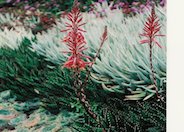
Common name:Golden Toothed Aloe
Botanical name:Aloe X nobilis
This succulent perennial will only grow 1' tall and 1' wide. It has large, sharp, dark green leaves and clusters of red-orange flowers that bloom in summer.
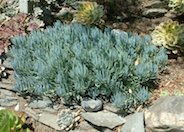
Common name:Kleinia
Botanical name:Senecio mandraliscae
This succulent perennial will grow to about 1.5' tall and 2' wide. It has curved, bluish gray leaves that are about 3.5" long and very slender.
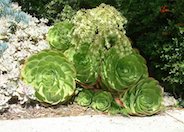
Common name:Parasol Aeonium
Botanical name:Aeonium arboreum
Parasol Aeonium is an upright succulent with rosette leaf clusters. It forms a mound and can be easily propagated by cuttings.
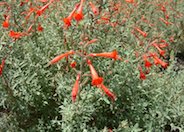
Common name:California Fuchsia, Zauschneria
Botanical name:Epilobium canum
The California fuchsia is a perennial with dense, narrow, green gray foliage and red orange summer flowers. The growth habit of this plant is sprawling and low. The California fuchsia is native to California, is drought tolerant, and attracts hummingbirds. -Cornflower Farms
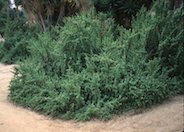
Common name:Elephant's Food, Elephant Bush
Botanical name:Portulacaria afra
This interesting succulent has an irregular growth habit. Depending on pruning and cold, Elephant's Food can be grown as a groundcover or shrub to 12' tall and wide. Plants work very well in containers, and can be used indoors or outdoors. It is drought tolerant but needs some protection from frost. It does best with some shade in most arid climates; otherwise, it tolerates full sun. This plant is a native of South Africa.
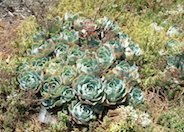
Common name:Hen and Chicks
Botanical name:Echeveria 'Imbricata'
This succulent perennial is very small, growing only 2"-3" high. It produces orange, pink, and red blooms and does best in full sun and moist soil.
| Designer: Unknown | Brentwood Beauty 8 |
Photographer: GardenSoft |
Soils and Compost:
Physical weed control, including mulching, or hand removal protects the watershed from harmful chemicals.
Integrated Pest Management:
Remove irrigation water and fertilizer from areas where you don't want weeds to grow.
